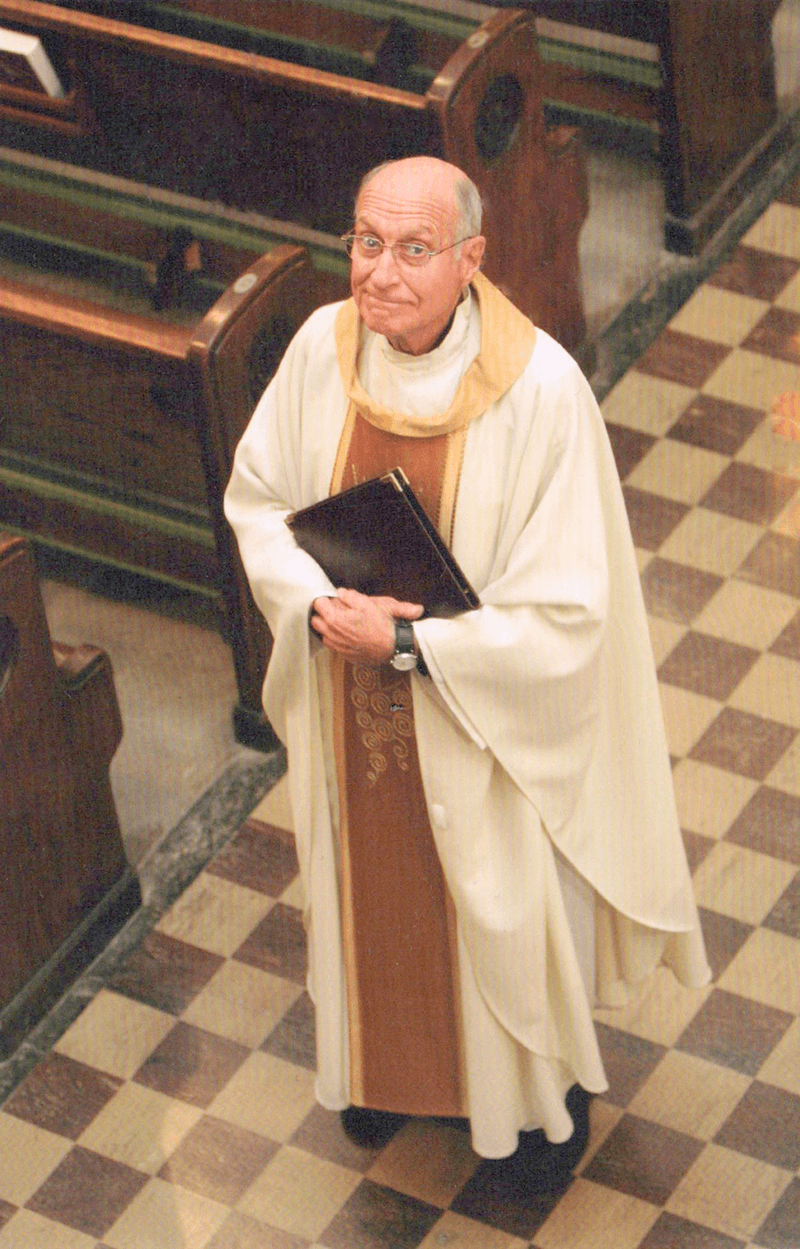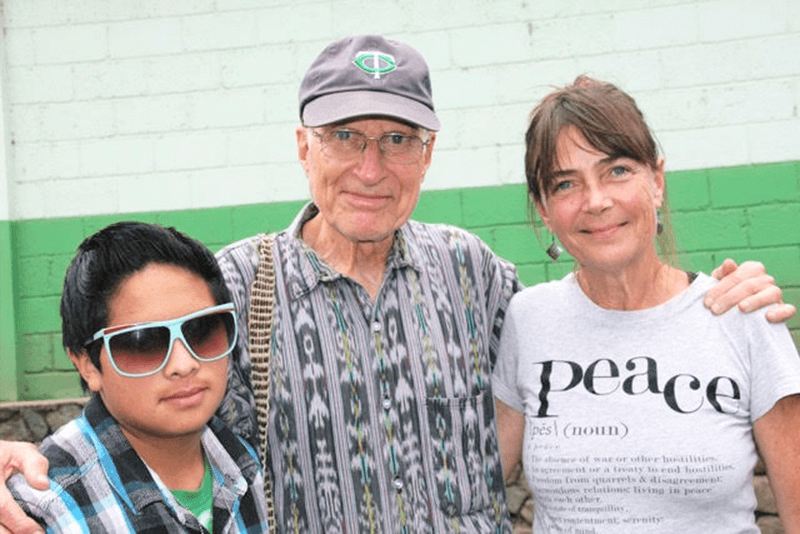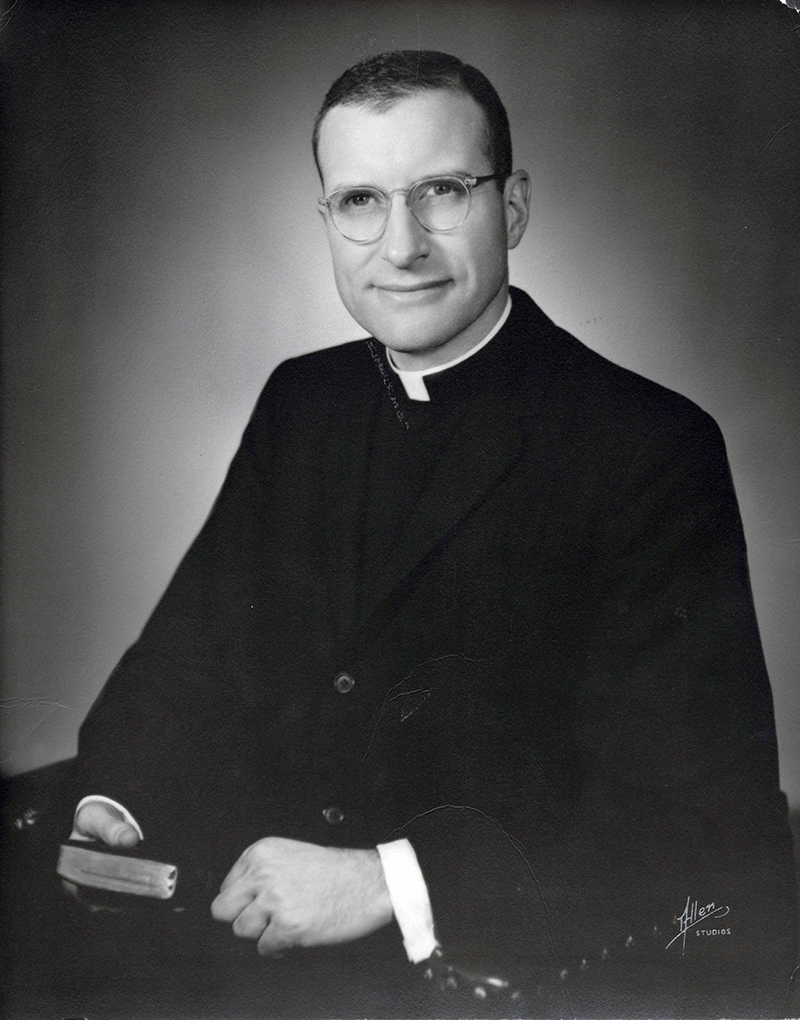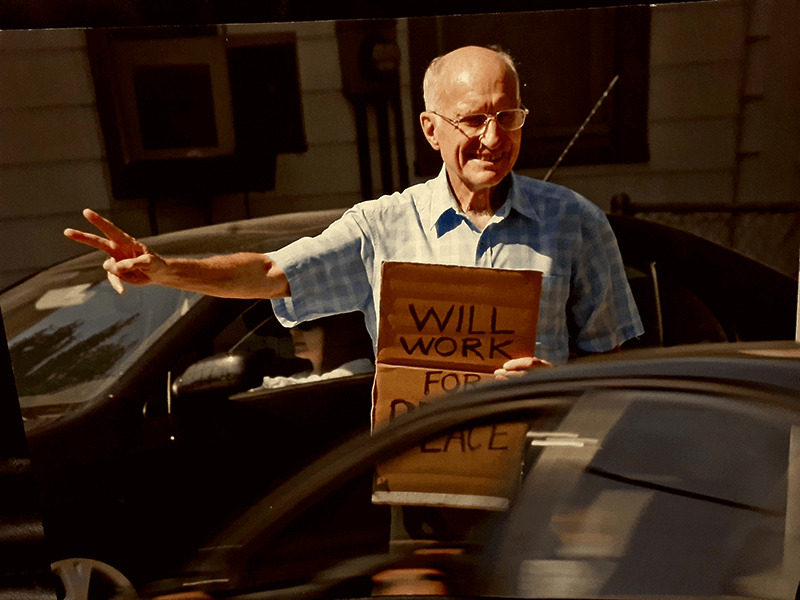Young John Brandes knew very early that he would become a Catholic priest. As he put it then, “I want to save souls.” He joined a vocation club in the fifth grade at St. Bridget’s School in North Minneapolis, attended Nazareth Hall and St. Paul Seminary, and was ordained in 1951. For the next 70 years he served in the active ministry, retiring in 2021, at the age of 94.
Rev. Brandes died January 10, 2023, in Shoreview. He was 96. He was preceded in death by his brother Jim and sisters Barbara and Kassie. He is survived by his brother Ray Brandes, sister Mary Griffith, and 25 nieces and nephews. On Monday, Jan. 23, a funeral Mass was held at St. Boniface Church, officiated by Archbishop Bernard Hebda; more than 400 people attended.
It was not surprising that the death of Father John (his preference) brought forth an outpouring of sympathy and remembrance. In his seven decades of ministry he encountered thousands of people while serving in several parishes in the Twin Cities and one in Guatemala.
Nephew Tom Brandes spoke about his uncle’s first posting to the Cathedral of St. Paul, where he served for 15 years. “There were no days off or two weeks’ vacation. The demanding schedule meant that the days were long and the short nights were often interrupted by urgent phone calls.” In 1966, Father John became the first pastor of the new parish of St. Rita in Cottage Grove. He recruited families from St. Thomas Aquinas in St. Paul Park to join the new parish, and since there was no church building, he began holding services for 350 families at a nearby high school. He then oversaw the design and construction of the new church, noting that he wanted it to be used by the community for more than just high masses.
In his homily, Rev. Gregory Welch, a weekend presider at the Basilica of St. Mary, said Father John was “someone who lived an extraordinary life. In those days, the Cathedral of St. Paul had two or three hospitals,
elderly homes, all those major celebrations, the daily and weekend liturgy, and they did everything; there were seminarians for the major feasts and there were kids from the schools. As the chaplain of a hospice, he didn’t give someone who was on the verge of death the last rites, he gave them extreme unction. Then he would be up at two in the morning and off to the hospital. Father John did weekly, bi-weekly, and monthly confessions. People would come to the cathedral to go to confession, sometimes to make sure they had anonymity from the parish they were from. He told me that more than once he fell asleep in the confessional.” But to the rest of the Cathedral’s populace, he was considered, “the best thing since ball bearings. He had to live out the ‘everyday-ness’ of his role as a priest.”
Welch pointed out that Father John had been trained long before Vatican II and all its changes to the liturgy, but he adapted to the changes. “In a childlike way, he was able to change, to be taught to see things new – he was able to re-understand his own identity as a priest because he was so comfortable being one to one to one to one. In the 1950’s, there was no such thing as anyone giving out communion but a priest; so in hospitals, nursing homes, the elderly, the only ministry that was going on was from the priest. And he was willing to do that forever.”
During his time in Maple Grove, Father John became involved with the Honeywell Project, a grass-roots movement aimed at getting the local electronics manufacturer to cease making military weapons. His work with them led to him being arrested seven times, mostly for trespassing, during peaceful demonstrations. At one hearing, the judge sentenced him to community service, to which he replied that felt he was doing a community service when he was arrested. During his time as pastor at St. Mark’s in St. Paul, he continued his anti-war activities, sometimes walking to the Lake Street Bridge, at the edge of the parish border, to join in peace marches. For more than ten years, he became a weekly fixture on University Avenue near Emily’s Lebanese Deli, holding up signs saying, simply, “PEACE.” Welch noted that a lot of the people back then who were anti-war were angry at the opposition, “But Father John always spoke of forgiveness.”
From St. Mark’s, Father John went to St. William’s in Fridley, where he stayed for six years. During that time, he secured funding for building 16 units of affordable housing, now called Brandes Place. Gary Hartmann, who served on the parish council at St. William’s said, ”Father John embraced the spirit of Vatican II and strongly encouraged members to get involved in parish decisions. He was a good listener, very collaborative, always inclusive and a real model of servant leadership. He instinctively understood issues of social justice and the common good and how Christians are called to respond.”
Then as now, a pastoral assignment to any one parish was about four to six years; in his career, he had three assignments that averaged 13 years and four that averaged seven. At age 67 when most adults see retirement rapidly approaching, Father John made a startling decision: he decided to accept the post of assistant pastor at San Lucas Tolimán parish in Guatemala, where he served for nearly 12 years.
The transition wasn’t easy; he had to learn Spanish, but he had few illusions: “I’m old, I’m bald, I’m white, and I don’t know the culture of Guatemala. I’m everything Guatemala is not.” But he always felt he could help, and he loved the country and the people.
Joe Biernat traveled to Guatemala on a church mission and met Father John, and later wrote about his admiration of the man. Some years later, Joe and his wife Sheila discovered that Brandes was the new parochial administrator of St. Boniface, a church across the street from their home. They became members, and followed Father John’s successful efforts to bring an almost-dead parish back to life. Father John led many physical improvements to the church building, as well as adding a Sunday evening mass and revitalizing the church council, telling the members: “You folks run the church: I work for you.”
A church worker there remembered his lack of pretense; he loved going to Twins games, but never wore his “blacks” there, and sometimes seemed mildly irritated that other priests would. He would say, “I’m no better than anyone else; God knows who I am.” She also recalled him riding his bike to Sentryz’ Market for groceries, using a clothesline to dry his laundry and save electricity and smoking his cigars on the rectory’s back porch while he wrote his homilies.
In 2012, he received notice from the Archdiocese that his time at St. Boniface was up, parish members were ready to fight. He called parishioners together and said “I’ve been a priest for almost seven decades. I took a vow to go where I am told. I accept this decision.” He resisted a planned retirement dinner, saying “Who would come?” That dinner, on a cold January Sunday, brought 400 well-wishers.
In 2014 Father John became priest-in-residence at Catholic Eldercare, just down the street from St. Boniface. He said mass at St. Anthony of Padua Chapel and tended to the sacramental needs of the residents. In 2020, he announced his retirement. Catholic Eldercare CEO Greg Baumberger said, “We were grateful for his great spirit during the six years he was with us.”
Father John tried to balance a life of work with family activities. He loved the outdoors, canoeing in the Boundary Waters and staying in the family cabin in Remer. His niece Monica Shearon spoke fondly of trips there with him to what he called his “happy place,” from her childhood on, ending only when he was approaching 80. She said she was very close to him, calling him her second father. He was an avid cribbage player, and she was playing with him when he had a stroke on Thanksgiving Day. It was his last hand of cribbage, she said, “And he won!”
Father John Francis Brandes with members of his congregation in Guatemala 2002. (Provided by Joe and Sheila Biernat) Father John served the Catholic church for 70 years and spent 10 years on University Avenue holding up signs promoting peace. Father John at the Cathedral of St. Paul. (Provided by the Brandes family)



